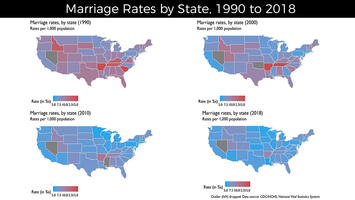
The war between the sexes has ended, and rather than a co-operative future that could benefit all, it has turned out to be more like a lopsided win for the female side. After millennia of power struggles based on such things as biology and social function, the role of women in advanced societies has expanded dramatically, which is generally a good thing but has some rarely cited downsides.
The crux of the problem lies in the fact that as women rise, men seem to be falling. This limits opportunities to establish stable families or even find decent partners. The Brookings Institution’s Richard Reeves has found that as much as one-third of the decline in marriage rates is driven by the inability of women to find mates that they see as stable, smart, good earners or otherwise up to their standards.
The gap between the sexes has been driven in large part by shifting rates of educational achievement. In the United States, women now collect nearly 60 per cent of bachelor’s degrees. In Canada, they have accounted for most university graduates for at least a decade.
To be sure, the longstanding pay gap between men and women still exists, but women are making progress towards the top echelon in Canada, as well as the U.S. Women started a majority of all new firms in the U.S. in 2020 and 2021. Men still earn more, but among young adults aged 20 to 24, the income gap has narrowed to just US$43 (C$58) a week.
The biggest divide may be found among the working class. Many workers, especially those with jobs tied to physical labour, have faced extreme pressures from both foreign competition and regulatory restraints. Today, according to demographer Nicholas Eberstadt, employment rates among men are at “Depression-era” levels. As Reeves notes, men are increasingly “left behind,” plagued by psychological disorders and a lack of friends, and remain outside the economy.
Some feminists may celebrate this decline, but it does not bode well for women, at least outside the job market. In many areas, such as self-harm and depression, teen girls generally suffer more than men, according to psychologist Jonathan Haidt, while the percentage who have contemplated suicide has surged. These are trends seen, not just in the U.S., but in other western countries, including Canada.
Read the rest of this piece at National Post.
Joel Kotkin is the author of The Coming of Neo-Feudalism: A Warning to the Global Middle Class. He is the Roger Hobbs Presidential Fellow in Urban Futures at Chapman University and Executive Director for Urban Reform Institute. Learn more at joelkotkin.com and follow him on Twitter @joelkotkin.
Graph: Senate.gov, Public Domain.












